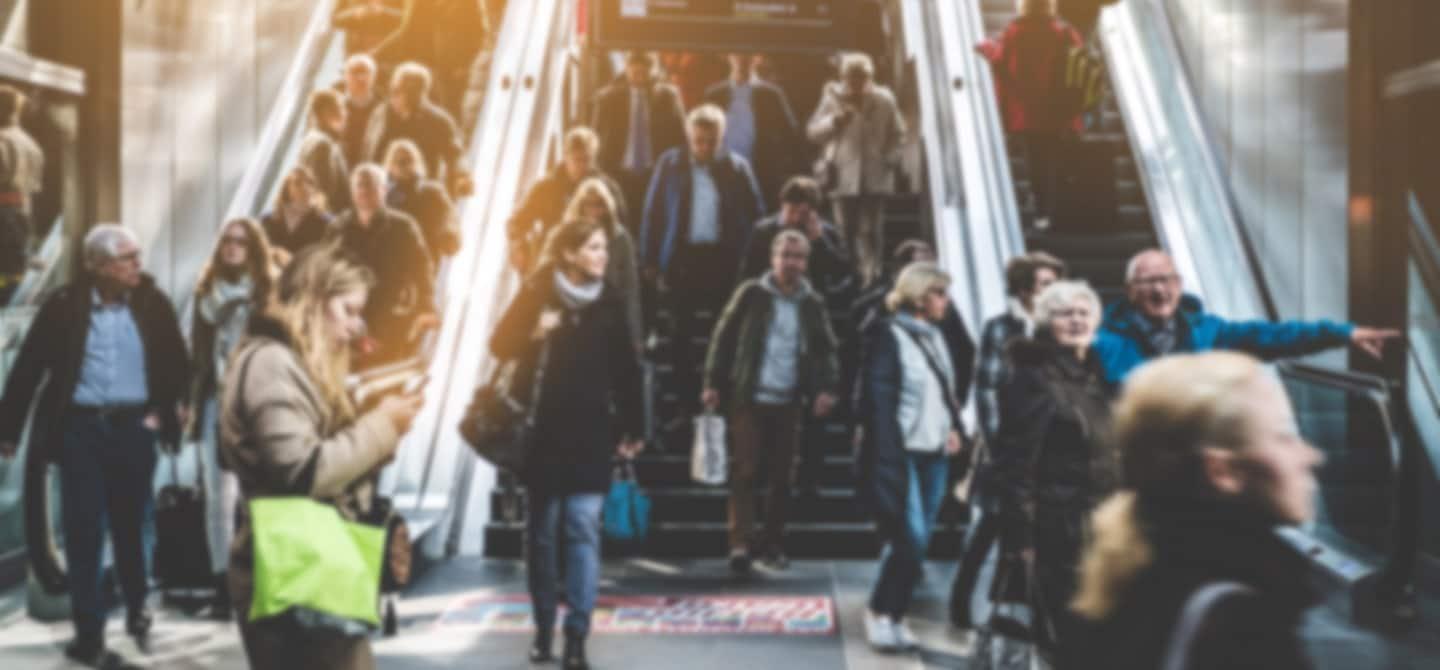Would you like to explore our corporate site or visit your local website?
Stay on Corporate siteThey are such a quintessential part of our daily lives we tend not to notice them. They melt into the urban landscape, essential but overlooked.
Imagine if the humble escalator didn’t exist. Then you will begin to understand what a vital role they play as they move us through cities.
“Cities tend to be built up and threading new transport systems into them is very land hungry,” explains Gesine Junker, principal urban designer at Transport for London. “New underground lines have to go deeper and deeper to avoid existing infrastructure, such as other tube lines, deep sewers and piled foundations from high rises. Alternatively, they have to go high, like the Docklands Light Railway. In both cases, escalators are essential to get people up and down.”
There are other options, but they come with hefty liabilities. To climb 100-metre-long stairs would wear out commuters before they make it to their offices. A motorized inclined walkway can’t climb steeply and would take an enormous amount of space.
“Elevators are also a poor alternative,” Junker continues. “They are more disruptive to the journey, which reduces the attraction and the business case.”
Sascha Brozek, head of Major Projects at KONE, points out that elevators play an important role in helping families with baby carriages and people with disabilities move around. This way, elevators and escalators form a part of the whole transportation ecosystem.
“What we want to avoid is creating bottlenecks throughout the journey. Hence, we need to understand the mixed needs of people flow strategies, peak hours and characteristics specific to certain buildings and infrastructure.”
Expanding architecture
Brozek points out that although rapidly growing cities grow vertically, particularly in Asia, the number of people commuting long distances is also on the increase. Escalators have therefore become ubiquitous in transport hubs, such as metro stations and airports, which have to deal with large flows of people travelling between levels.
“People want to get to their destination and from one means of transport to another without disruptions,” Brozek says. “The safety perspective is also very important. If an escalator is out of order, a station might be overcrowded and that could lead to a shutdown, which would then affect the whole public transportation system.”
Since they are so important, escalators need to be able to endure nearly non-stop use. The London Underground depends upon its 440 escalators to move 1.37 billion people annually. Escalators at the busiest stations work extra hard: Waterloo’s machines transport almost 12,000 people per day, on average.
Brozek calculates that if an escalator moves 0.6 meters per second 24 hours a day, a single escalator travels a total of almost 20,000 kilometers every year. That equals to half of the Earth’s perimeter.
“They might look like just moving steps, but the underlying technology is much more than that. Considering the distance and performance and ensuring safety and reliability, escalators really are the workhorses of cities.”
Yet escalators have also allowed us to change how we construct buildings. Junker mentions double height lobbies and celebrating civic infrastructure, such as the Jubilee line extension of the London Underground, as examples.
“Escalators allow buildings to have several entrance levels, maximizing the precious ground floor interface,” she says. “Many examples of these are in the City of London or at Canary Wharf. Contemporary tube stations would look very different if they had to rely on lifts.”
Making journeys dramatic
Escalators move large numbers of people and allow different building constructions, but they can also play a much subtler role.
“Escalators allow the ‘drama of the journey’: you can see where you are going,” Junker says. “Department stores rely heavily on this experience.”
This “drama of the journey” via the escalator is used in a variety of ways. CNN uses the world’s longest freestanding escalator for tourists to see their studios in Atlanta. KONE’s unique arched escalators at the Elbphilharmonie concert hall in Hamburg pass through a white, rectangular tunnel. Visitors can’t see the end of the ride due to the escalators’ shape, which increases the “wow factor” when the panoramic view over the city suddenly appears.
Anywhere an escalator is built, it’s essential to understand the specific requirements of its purpose. Brozek says that KONE works with city and infrastructure planners from an early stage to gain a good understanding of both current and future needs.
“Engagement and cooperation in the planning phase enable finding the best possible solutions, as we can bring the right competencies together.”
Published on March 16, 2018

